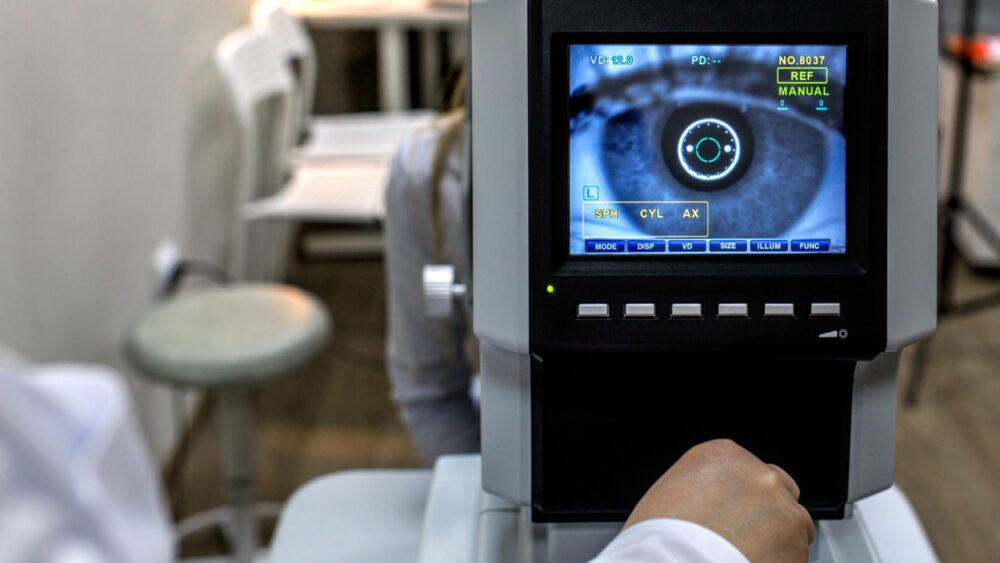
Optometry is a diverse field with a wide array of technology and equipment needed to run a successful practice. To ensure you can provide the best eye care possible, it’s important to have all the right tools at your disposal. Explore what optometry equipment will help you succeed as a practitioner and get insight into our top picks for each category.
Digital Imaging
Digital imaging is the future of optometry. This technology allows for more accurate diagnosis, is more efficient than traditional film, and is more cost-effective. Digital imaging also has environmental benefits over conventional cinema because there are no chemicals used in its production or disposal. There is no wastewater produced from development processes, less packaging material used in shipping, less storage space required for equipment and supplies, and less electricity consumed by machines used during production.
Computer-Assisted Eye Exams
Computer-assisted eye exams are a must-have for any optometry practice. Digital retinal cameras, video-based diagnostic equipment, and optical biometers/tonometers are just some of the technologies that have made it easy for technicians to conduct comprehensive and accurate eye exams.
Electronic digital microscopes allow you to magnify objects up to 400 times their actual size without having them move out of focus or blur due to vibration or movement in your hand when using traditional microscopes. The images produced by these devices are clear enough for doctors who treat patients with conditions such as macular degeneration because they can see all aspects of tissue samples under high magnification without relying on their eyesight alone. This means less guesswork when diagnosing diseases like glaucoma or cataracts – but only if you invest in quality equipment!
Digital Refractors
Digital refractors are used to measure the refractive error of the eye. These can determine whether or not a patient needs glasses, and optometrists often prefer them because they provide more accurate results than traditional methods.
Digital refractors work by shining light into your eye and measuring how much it bends through your lens and onto a sensor that records what it sees. The measurements taken by this device are then compared to those taken during an eye exam, which allows us to determine how well-focused your eyesight is overall.
Electronic Digital Microscopes
There are a few factors to consider when looking for an electronic digital microscope. First, it’s important to know how these devices work and what they can do for your practice.
Here’s how they work: An electronic digital microscope combines the functions of both a traditional microscope and a video camera. It has an LCD that lets you view images on screen while using the device and also allows users to take pictures or video clips with their phones or computers. This makes them ideal tools for educating patients about their eye health issues–and making them feel more comfortable with treatment options by giving them more information than just what’s provided by doctors’ verbal descriptions alone!
Digital Retinal Cameras
Digital retinal cameras capture retina photos, which can be used for more than just eye examinations. They’re also used to diagnose eye disease and monitor it during treatment.
The camera will provide clear images that show what’s happening in your patient’s eyes and where they occur on the surface of their retinas. Using this information, you’ll be able to determine if there are any abnormalities in their vision or if they have developed any changes since their last visit.
Video-Based Diagnostic Equipment
Video-based diagnostic equipment is a must-have for optometry practices. This equipment is used to diagnose eye conditions and determine the best treatment plan for patients.
Optical Biometers and Tonometers
Optical biometers and tonometers measure the curvature of the cornea. The optical biometer is used to find out how much a patient’s vision has changed since their last eye exam. At the same time, tonometry measures intraocular pressure (IOP), which can indicate glaucoma.
As You Continue
These various equipment options are essential to starting a new optometry practice, but to keep a practice going, you’ll need some products like lenses and frames. That’s where Allentown Optical comes in! No matter what you need, our knowledgeable staff will help you find the perfect equipment to meet your practice’s needs. Contact us today to learn more about our products and services and how they can help your optometry practice grow!
